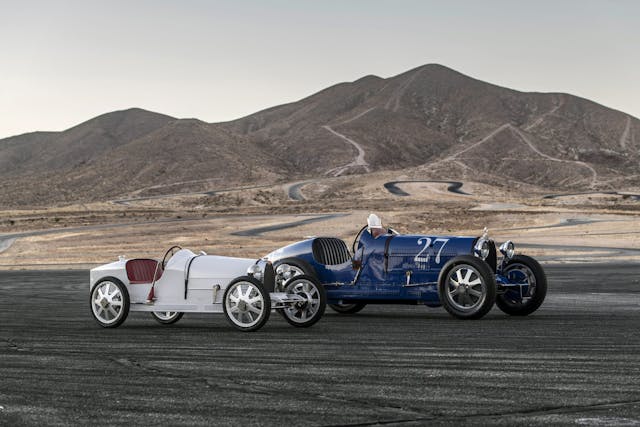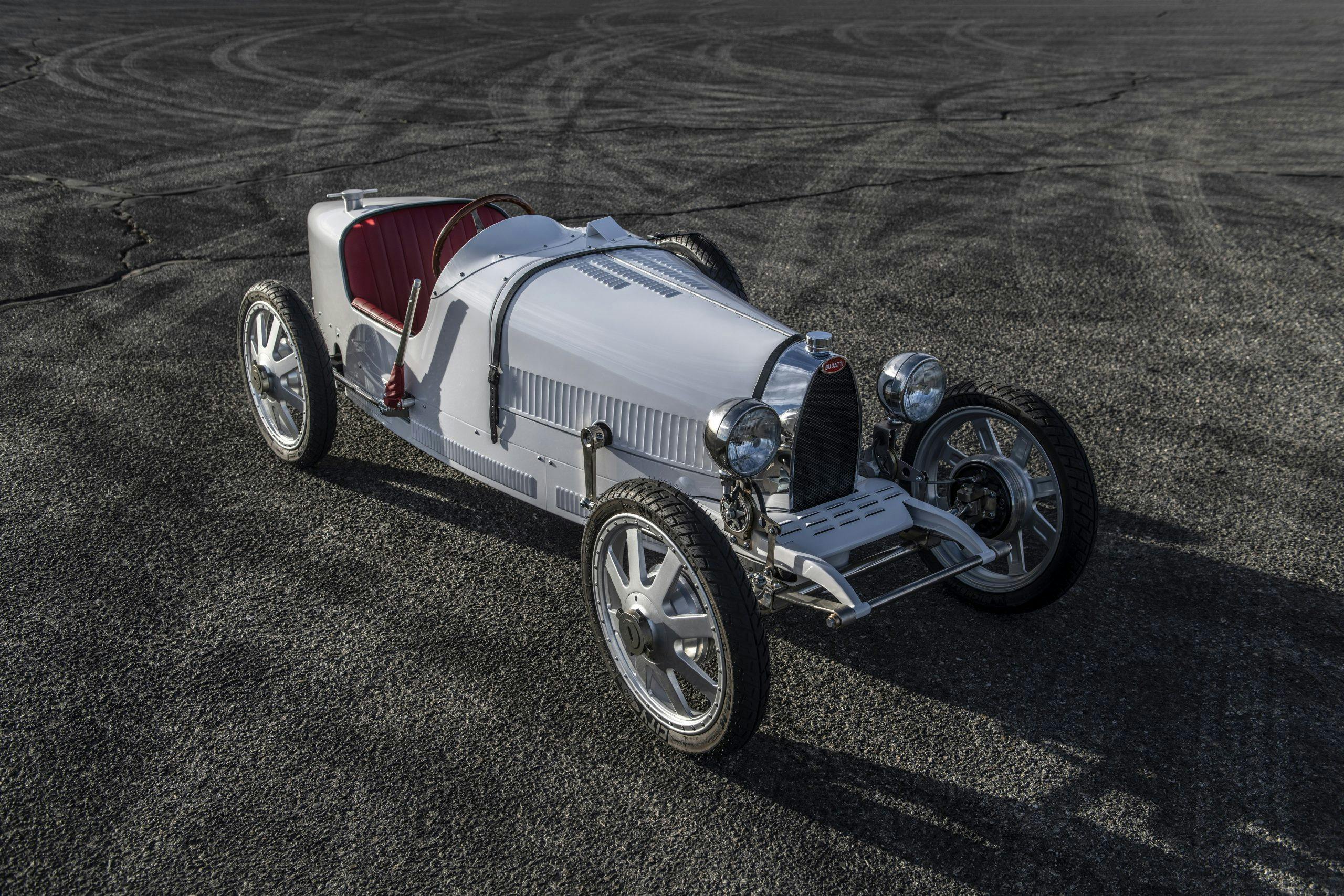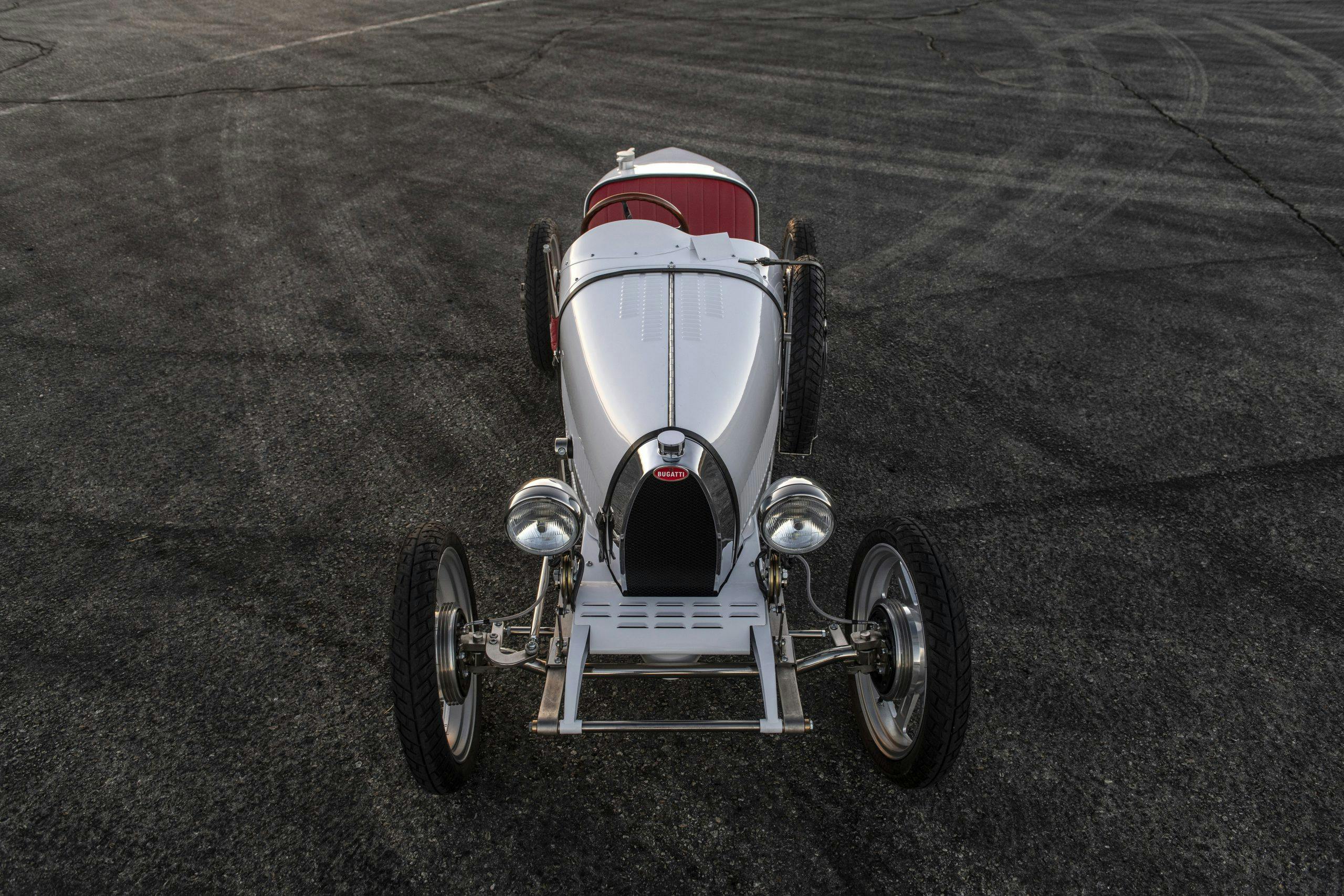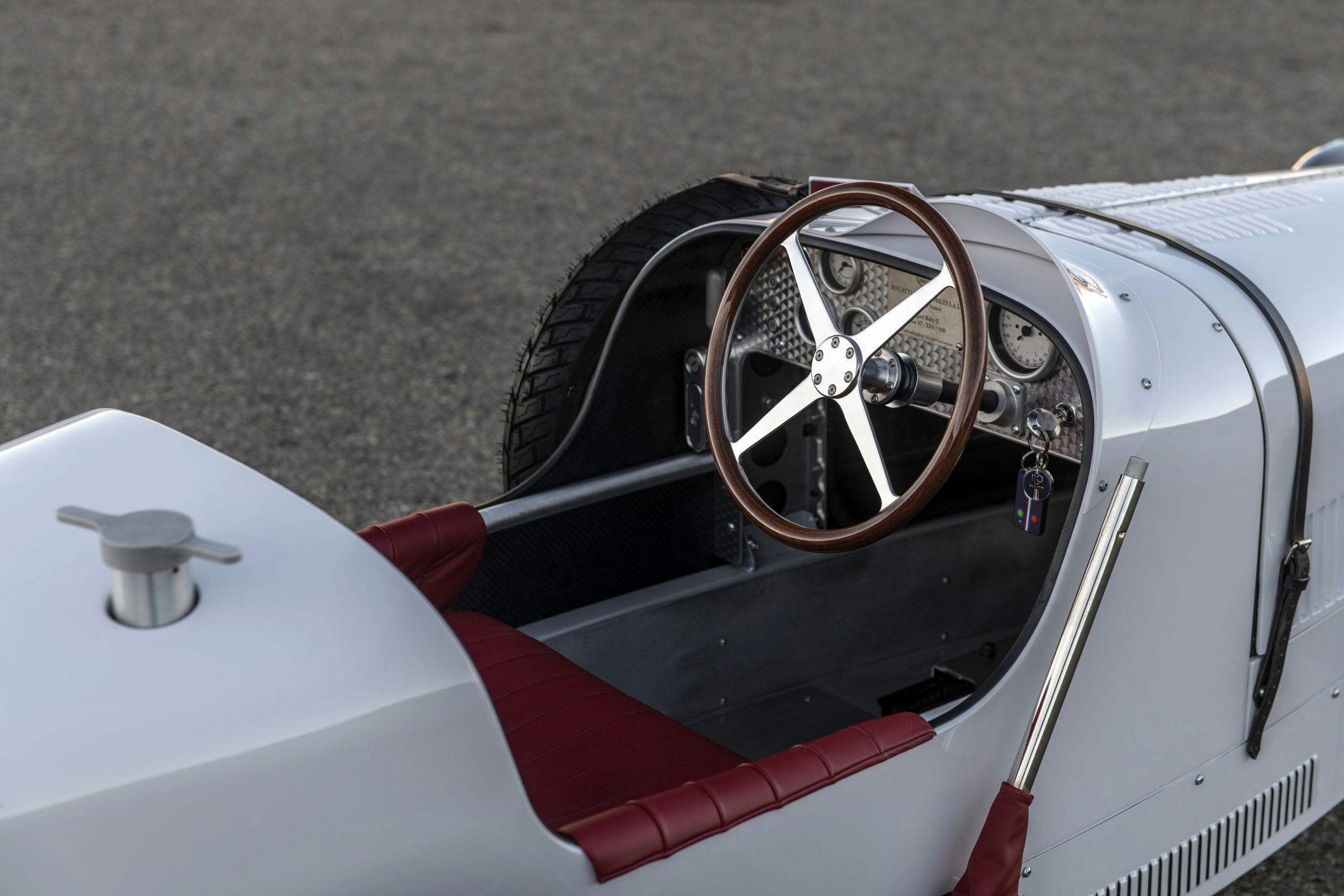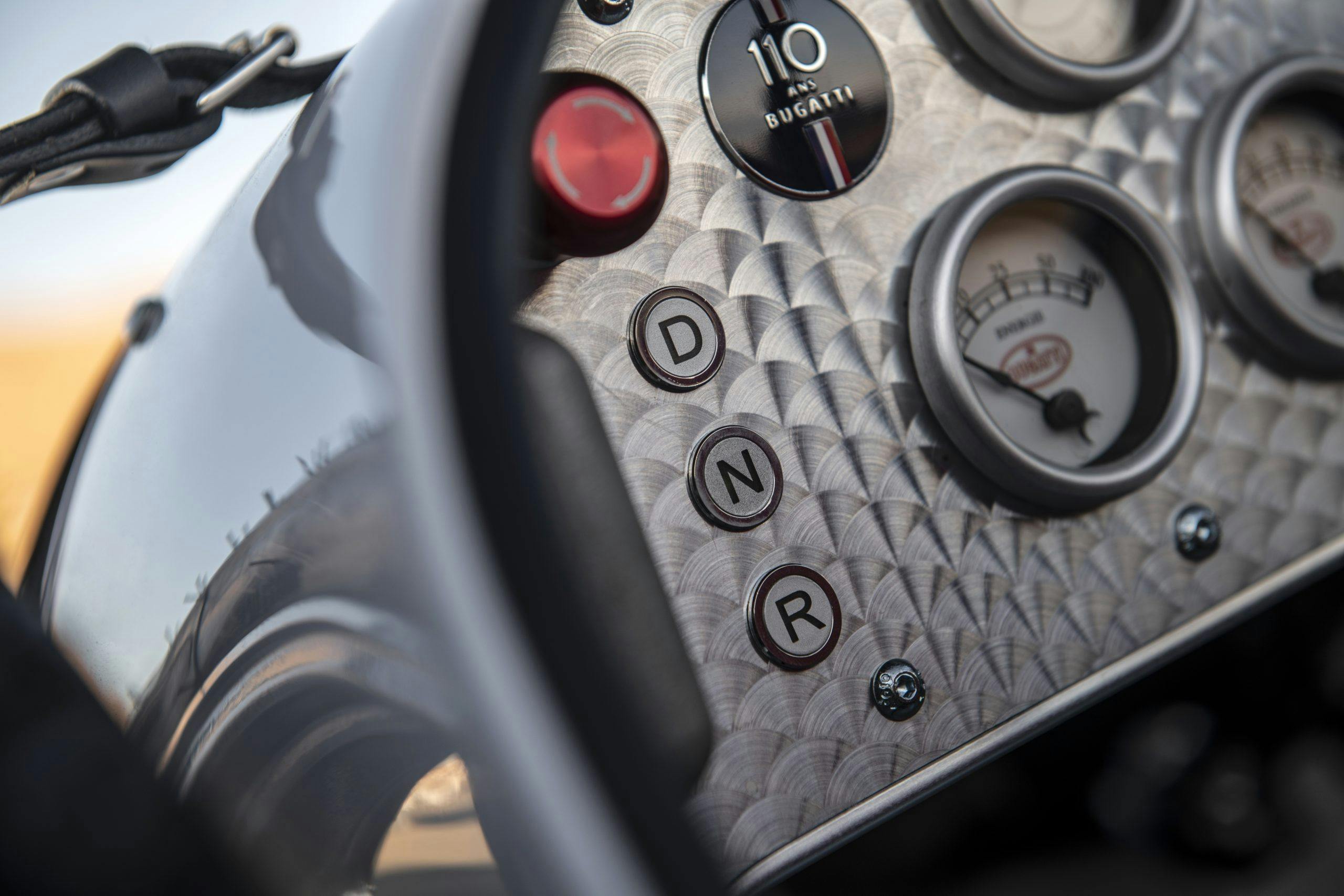Media | Articles
Zipping through Willow Springs in Bugatti’s Baby II
The Little Car Company has teamed up with Bugatti to produce 500 copies of the Baby II, a three-quarter scale version of the iconic Type 35 racer. If you’re unfamiliar with the history of scale reproduction of Bugatti’s Type 35, just as I was, there’s a fitting reason why this is named the Baby II. A half-scale version of the Type 35 was built for Ettore Bugatti’s four-year-old son, Roland. The original one-off Bugatti Baby garnered so much attention it went into production from 1926–1937 as an official Bugatti vehicle. Five hundred were made.
Now, Bugatti and The Little Car Company are celebrating 110 years of the Bugatti brand with a ¾-scale version powered by an electric motor.
Just like the original, the Baby II features a silver Bugatti emblem or “macaron”, Michelin tires on eight-spoke wheels, and an engine-turned aluminum dash. On the left side of the dash, rather than a mechanical fuel pump, the Baby II has a T-handle that acts as the drive selector. Rotating the handle cycles between drive, neutral, and reverse. Also like the original, the steering wheel is made of mahogany and aluminum. There’s even a hand brake mounted outside of the body.
The Baby II is available in three versions. The standard model uses a composite body and is powered by a 1.4-kWh battery and has two speed modes, novice, and expert, that allow for speeds up to 12 and 28 mph respectively. It retails for $36,600 and is available only in French Racing Blue with a black leather interior. Stepping up to the $53,000 Baby II Vitesse adds a 2.8-kWh battery and a “Speed Key” that offers more than twice the power. It also opens up a host of exterior and interior color options. Its body is made from carbon-fiber twill for improved rigidity and lower weight. Finally, the $71,400 Baby II Pur Sang offers the powertrain of the Vitesse and tops it with a hand-crafted aluminum body.
Bugatti invited us to drive a Baby II Vitesse at California’s Streets of Willow Springs track. Despite the ample adjustability of the sliding pedal box, fitting a full-scale six-foot-three-inch-tall human into a ¾-scale car was … tricky. I learned that the best seating position was to fold my left leg under my right knee. It was either that or plant my foot flat on the floorboard and let my knee hit the edge of the dash. I first tried the Novice mode, indicated on the dash by a familiar turtle icon, and it was very much like an oversized Power Wheel. The key used to switch between Novice and Expert can be removed, keeping the speed setting locked in, and the key fob has a kill switch that can shut the car off remotely. It also automatically shuts the car down once it leaves the fob’s range of about 100 feet.
Marketplace
Buy and sell classics with confidence

Turning the key to Expert, marked with a rabbit icon, makes the Baby II into the nicest golf cart you’ve ever seen. The power is linear and there’s urgency but not enough acceleration to break the skinny Michelins loose on the asphalt. A lap on Streets of Willow is easily done without touching the brake pedal, as lifting off the throttle engages regenerative braking before you need to activate the car’s four-wheel drums.
With the speed key engaged, things are a bit different. I was warned that the track’s tightest turns could cause the Baby II to step out a bit and even lift a wheel. Confirmed! While I was busy trying to approximate something that resembled a racing line, the 40-mph speeds from the Baby II did call for some actual braking here and there. While I wasn’t very often on the ideal line to carry the speed that would cause the tires to reach their limits, I did drift through a couple of the turns just a bit. In a fully open cockpit with no seatbelt, it’s just fast enough to be thrilling.
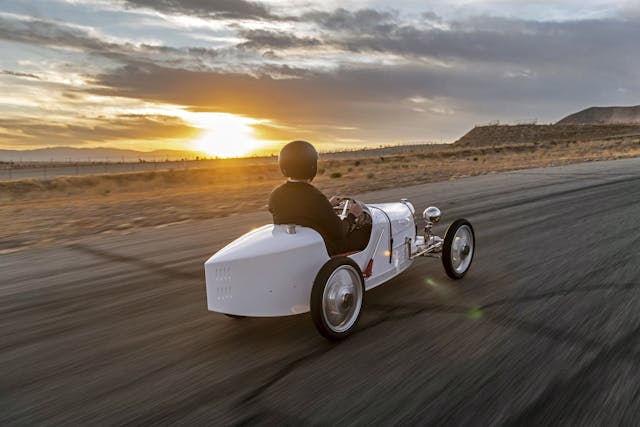
With 2.8 kwh of battery, the Baby II should return 30 or so miles of range under normal driving, but going all-out for six laps took the battery from ¾ full to limping into the paddock. That’s about 10 miles of hard use, with all of the hill climbs and a headwind that comes standard at Willow Springs. Recharging the battery takes a couple of hours, and additional battery packs are optional.
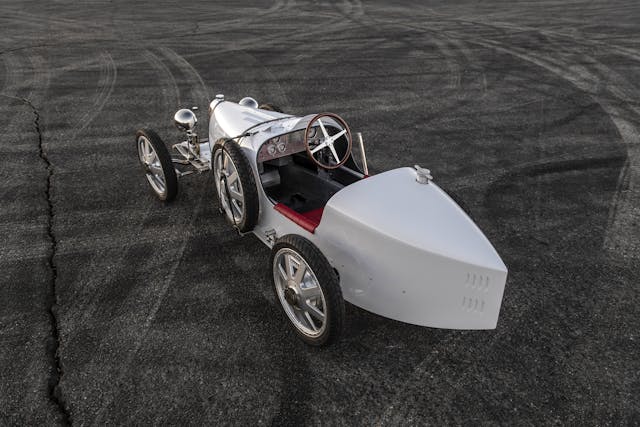
About 90 percent of the Baby II’s 500-run production is already spoken for. Buyers will likely use them as runabouts or, we hope, as pit vehicles. If enough of them show up at future Rolex Monterey Motorsport Reunion, maybe they can get their own racing class.
